Exploring EPDM Roofing Solutions - PODCAST TRANSCRIPT
June 19, 2025 at 1:00 p.m.Editor's note: The following is the transcript of a live interview with expert Kevin Roepe. You can read the interview below, listen to the podcast or watch the recording.
Intro: Hello everyone and welcome to a very special Lunch & Learn from Roofers Coffee Shop. My name is Karen Edwards and in today's Lunch & Learn, we are going to be talking with Kevin Roepe from Johns Manville exploring everything about EPDM roofing solutions. Kevin, it's great to have you here. Thank you for being here.
Kevin Roepe: Thanks, Karen. I'm excited to be here today.
Karen Edwards: Yeah, so before we dive into the content, I just want to summarize what our learning objectives are for today. The first one is we want you to understand what EPDM is and be able to take that away after watching this episode, the second is we want you to understand EPDM installation and the third learning objective is to understand what EPDM solutions are out there today. Alrighty, so let's get started on this wonderful topic. Kevin, tell us first of all what your role is there at Johns Manville and then I want you to answer that question, what is EPDM?
Kevin Roepe: Well, I am the EPDM product manager, so I'm definitely well suited to answer that question of what EPDM stands for. It stands for ethylene propylene diene monomer. But because that's quite a tongue twister, I like to say that it stands for every person's desired membrane.
Karen Edwards: That's a good one. I like it. I like it. So you also hear it called rubber roofing from time to time. Can you explain exactly what that means and why do people call it rubber?
Kevin Roepe: That's correct. So EPDM is a rubber, but it's not a natural rubber, it's a synthetic rubber. In the early 1960s, EPDM polymer was first synthesized and then it only took a few years from that initial introduction for it to be rolled out flat and laid onto a roof with great success.
Karen Edwards: All right, so Kevin, talk to me a little bit about how EPDM is made, right? How do they bring everything together to make this incredible system?
Kevin Roepe: Yeah. So before I dive into how it's made, I want to start by addressing a common question around EPDM. EPDM is commonly referred to as a thermoset, which is different than the other single-ply membranes, which are thermoplastics. A thermoset refers to the chemical cross linkage of polymers that occur during the manufacturing process and that is what really sets it apart from those other single-ply membranes that are on the market. Now, EPDM is made similar to all products by starting with a bunch of raw materials. It's made out of the EPDM polymer, a variety of processing aids, stabilizers and fire retardants, as well as carbon black. Now Karen, I have a trivia question for you. What color do you think EPDM polymer is?
Karen Edwards: Well, I want to say black, but I feel like it might be a trick question.
Kevin Roepe: It is a bit of a trick question. EPDM polymer is actually clear-
Karen Edwards: Oh, interesting.
Kevin Roepe: And it's the carbon black in the product mix that gives it its black color as well as providing additional UV protection.
Karen Edwards: Very interesting. Thank you, Kevin.
Kevin Roepe: Yeah, so in order to make EPDM, you start with all of these raw materials and they get mixed in a large mixer and that creates your raw EPDM slab or pellets. That material then moves through an extruder, a die to help set the thickness and then a calendar roll to reach the final desired state of the sheet. But at this point, the material is still uncured and one of the key differentiators from thermoplastics is that uncured EPDM can be seamed together to make sheets that are up to 10, 20, 30, 50 feet wide and up to 200 feet long, which is a significant difference from the widths of thermoplastics, which are usually limited to 12 feet.
Kevin Roepe: This uncured rubber then moves into a vulcanizer, which is a school bus-sized pressure cooker, for lack of a better term, where it sits in a high temperature, high pressure to reach the final chemical composition and giving it the finished characteristics that our customers desire. After it comes out of this large oven, it gets cut and packaged into the finished product that you see today.
Karen Edwards: How has EPDM grown through the years and how is it being used today?
Kevin Roepe: Yeah, so we saw a lot of success with EPDM from its introduction in the mid-1960s through the 1970s as there were some constraints with alternative built-up and asphalt roofs during the oil crisis. And then we continued to build on that success through the '80s and '90s into the early 2000s as EPDM continued to be one of the premier choices for roofing membranes. And over the decades we've seen many advancements in EPDM including improvements in the adhesives and butyl tapes that are used to secure the membrane to the roof and to create the watertight seals that are so critical to the longevity of the roof. And we continue to see innovation throughout reformulations, making the material from different compounds to make it continue to have that long-term success that we are known to have with EPDM.
Karen Edwards: So Johns Manville didn't just say, "Okay, here's EPDM. Now everybody use it and we're not going to do anything else with it." Right? You've got an entire team that's always working on that. Can you talk a little bit about that?
Kevin Roepe: That's correct. We have an entire team of engineers and scientists who are dedicated to improving the product that we introduce and that we produce every day. Whether it be through different manufacturing techniques or through different raw material mixtures, we continue to research ways to make this product better so that we can provide high quality roofing material for the market.
Karen Edwards: So how is EPDM being used today? Is it still a growing and popular product and what kind of buildings is it suited for?
Kevin Roepe: Yeah. So EPDM remains a very popular product in the market and thanks to a variety of attachment methods, EPDM can be used in a broad range of low-slope commercial roofing applications. We typically see it be installed on schools, hospitals, government buildings and a variety of commercial buildings as well. Because EPDM is inherently black, meaning that it absorbs heat well, we see it generally installed in the upper Midwest, around the Great Lakes and in the Northeast where there are more heating days than cooling days. However, with the introduction of white EPDM, that's allowed us to expand the geographic regions that we see EPDM installed in where the white membrane being reflective makes it a great option for areas where there's more cooling days than heating days.
Karen Edwards: Yeah, I love that you can adjust the color based on where your building's located and help improve the efficiency of your building. Okay, so let's talk, you mentioned briefly when I asked how it's used today about there are different methods of installing and attaching and you touched on that, but I want to move on to our second learning objective here and that is the installation of EPDM and talk about the different types of methods that can be used to put that membrane on the roof.
Kevin Roepe: Yeah. So there are three main attachment methods or installation methods, the first being ballasted and this makes up roughly 23% of all EPDM roofs that are installed. Next, we have mechanically fastened making up roughly 11% of all installed EPDM roofs. And last but certainly not least, we have the adhered roofs and that makes up the remaining 66 or so percent of all of the installed EPDM roofs.
Karen Edwards: So for those who don't know what ballasted is, can you please explain that?
Kevin Roepe: Yeah, so a ballasted roof consists of loose-laid membrane that is attached at the perimeter and then it is weighed down across the field with either rocks or pavers. Now these are going to be very aesthetically pleasing when you see all of the fresh river rock on top of the roof and because you're not attaching the roof across the whole field, it can be rather inexpensive to install.
Karen Edwards: I would imagine that some of those rocks or pavers could also offer maybe a little bit of reflectivity on that roof.
Kevin Roepe: Well, what we do see is that they offer additional UV protection. It makes it difficult for the UV rays to penetrate down to the membrane and that allows for the membrane underneath to last for a long time and hold up for a number of years.
Karen Edwards: Nice. Okay, so moving on to mechanically fastened, that is using screws, plates. Can you dive into that a bit?
Kevin Roepe: That's correct. So mechanically fastened as it sounds, you use screws and plates to screw the membrane into the substrate along the seams. Again, this is a very inexpensive installation method, only requiring the use of a battery-powered screwdriver to drill the screws into the substrate.
Karen Edwards: Okay. And last but not least was adhered. So that's using what kind of an adhesive?
Kevin Roepe: Yes, we have a variety of adhesives that can be used in a fully adhered system and these adhesives act as a glue. And so in an adhered roof, you're gluing 100% of the surface area to the substrate. That gives you a premium system that has proven performance.
Karen Edwards: Now we have three different ways to do it, you might be thinking, "How do I pick the right one?" Right? There's got to be pros and cons to every system or method I should say. So your ballasted, we mentioned that aesthetically pleasing and extra UV protection. What are some other pros or cons that come with that method of installation?
Kevin Roepe: Yeah. So ballasted roofs are great and they can leverage one of the coolest features of EPDM and that you can use very large sheets, you can use sheets up 50 feet in length and that allows you to lay out vast sections of roof very quickly. However, the flip side of that, because you are using ballast to hold down the membrane, you do have to deal with the additional weight of the rock or the pavers. And on a roof that's completely covered in rock, it is difficult to potentially find leaks in the seams. And so we always recommend if you are using a ballasted roof to make a map of where seams are on the roof so you can more quickly troubleshoot any potential leaks that you might have.
Karen Edwards: Smart. I like that tip. Okay, so if we're going to use the screws and plates and fasten the membrane to the roof, what are some of the pros and some of the cons of that installation method?
Kevin Roepe: Yeah. So to use a mechanically fastened roof, you need to use a scrim reinforced sheet of EPDM membrane. The scrim reinforcement provides additional hail protection and because you are mechanically fastening the sheets to the roof, you can get excellent wind uplift performance. However, because you are screwing through the membrane, it is of utmost importance that you have a high quality seam so that no water can leak through those penetrations that you make. And because the sheets are only attached along the seams, you get potential for sheet flutter, which can add noise to a building.
Karen Edwards: And last but not least, the adhered system, some pros and cons of that.
Kevin Roepe: Yeah, so again, as mentioned, these are proven systems with proven performance. Because you've glued 100% of the area of the membrane down, you get excellent attachment, excellent wind uplift performance. However, the adhesives are weather sensitive and as weather gets colder or humidity increases, it can take longer for those adhesives to flash off, which can increase installation times.
Karen Edwards: How does one determine what the best method is for the system?
Kevin Roepe: So that will be highly dependent on where your building is located, what sort of longevity you're looking to get and we have a team at Johns Manville that can help you answer those questions based on a variety of factors including location, weather patterns, et cetera.
Karen Edwards: Okay. So we have one new technology that we didn't mention during the attachment methods, but it's becoming more popular in the industry and that is the introduction of self-adhered systems. So can you tell us a little bit about that, how it came to be and what it is?
Kevin Roepe: So how could I forget to mention one of our newest portfolio offerings? So the self-adhered membrane falls within that fully adhered category of attachment type. However, instead of needing to use individual pales of the adhesive, the adhesive is laminated to the back of the membrane so that you can more quickly install an adhered roof thanks to that factory laminated adhesive.
Karen Edwards: Does that eliminate then the challenges that may come with flashing off? Is that no longer a factor?
Kevin Roepe: It does. The adhesive that's attached to the back offers an immediate tack, preventing the need to wait for that adhesive to flash off. And thanks to that immediate tack, you're able to install self-adhered membranes we've seen up to three times as fast as our traditionally adhered roof.
Karen Edwards: Wow. Talk to me a little bit about performance then. Are we seeing pretty much the same kind of wind uplift protection and performance as the fully-adhered systems?
Kevin Roepe: Yes, we are. We see that comparable performance between the traditionally adhered systems and the self-adhered systems, seeing similar wind uplift performance as well as the longevity of the membrane.
Karen Edwards: And probably sure eliminates the need for some specialized equipment for applying... If you don't need to apply the adhesive, you're going to be able to install that roof with less stuff on the roof.
Kevin Roepe: Yeah, you do reduce the amount of equipment needed on the roof. You're no longer carrying up pales of adhesive. You do not need to carry up either your rollers or the spray rigs to apply the adhesive. And with a simple combination of a stiff broom and a 75-pound split roller, you can install self-adhered membrane very efficiently with limited equipment.
Karen Edwards: Okay. So let's talk a little bit about the benefit to the building owner when you're using self-adhered because for buildings that are in use, there's adhesives and primers and things that kind of have smells, right?
Kevin Roepe: That's correct. And some of those adhesives do have an odor to them. And for buildings that remain occupied, such as hospitals where you don't want to have smell on the roof or that odor coming through, the adhesive on the self-adhered membranes eliminates the need for those VOC-containing primers and adhesives, making them great for those occupied buildings.
Karen Edwards: Okay, thank you. That was great. And I want to move on to our third learning objective, which is the different solutions that exist with EPDM. Can you kind of take us through what those solutions are?
Kevin Roepe: Absolutely. Johns Manville has a complete portfolio of EPDM solutions and we have something for every project and every need. We have an offering that includes the non-reinforced sheets of EPDM as well as those polyester scrim reinforced sheets. We include a variety of pre-taped products as well. We were talking earlier about the importance of using seam tape to close the seams on the roof and we offer a pre-taped solution that eliminates some of the work that needs to be done in the field. Now, all of these products are available in a variety of thicknesses, widths and lengths. To complement those, we do have a complete range of adhesives and accessories as well to help aid in the installation of completing any EPDM project that you might undertake.
Karen Edwards: All right. So Kevin, let's talk a little bit about some of the newer products that JM has introduced related to EPDM.
Kevin Roepe: Yeah, so in the past few months, JM has introduced two new EPDM membranes. This includes our white EPDM roofing system as well as our self-adhered EPDM roofing system. So I'll start by talking about our white EPDM roofing system. So we introduced this new white EPDM in both 60 mil and 90 mil thicknesses, as well as introduced a complete range of white EPDM accessories to go along with the new white membrane. Now, I'm really excited about the white EPDM because it offers all of the benefits of rubber, including being fully extruded and vulcanized, having the puncture resistant longevity that comes with EPDM and maintaining a higher coefficient of friction making it a non-slip white membrane. And because it is white, it provides a high solar reflectance, which helps to reflect sunlight and reduce heat absorption, which can contribute to lowering cooling costs and energy efficiency.
Karen Edwards: I like that you're having an option for those who want a white membrane on their roof, but want the benefits that come from EPDM, so that's nice.
Kevin Roepe: It is, it's excellent. And we also introduced a self-adhering EPDM membrane. Our JM EPDM FIT SA, which we introduced last fall and has been received with tremendous feedback so far, features a scrim stabilized adhesive that offers tenacious initial grain strength and features a split release liner for easy installation and comes with three inches of factory inseam tape for high quality seams. Now, the thing that really excites me about this product is that the adhesive we use allows roofers to extend their roofing season because it can be installed down to 20 degrees and rising without the use of any additional primers or adhesives.
Karen Edwards: Okay. Now EPDM membrane is measured in mils, right?
Kevin Roepe: That's correct.
Karen Edwards: Thicknesses. So tell me a little bit about the range of thicknesses and the differences between why somebody may want something a little bit thicker or the basic kind of standard.
Kevin Roepe: Certainly. So we offer a variety of thicknesses as thin as 45 mils. Now, that's not millimeters, that is thousandths of an inch. So we offer material that's available in 45, 60, 75 and 90 mil thicknesses. And the reason you would select a different mil thickness really comes down to longevity and performance. The thicker a sheet is, the more material there is to withstand to UV degradation, to impacts from hail or tools that are being dropped on the roof. And so it comes down to deciding how long you need your roofing system to last for and what system will get you there most effectively.
Karen Edwards: Excellent. And you mentioned some have a reinforcement on the back of the membrane as well that I'm sure that just provides additional protection.
Kevin Roepe: We do offer a reinforced membrane and the reinforcement is actually between or is embedded within the EPDM and this provides additional additional puncture resistance as well as prevents additional ballooning or the membrane might lift up, which is why it gives you excellent wind uplift performance because it's less likely to balloon than a non-reinforced membrane.
Karen Edwards: Now I'm going to bring it back because you did mention accessories and I want you to get a little more specific for folks. What kind of accessories do you have that complement the EPDM roofing system and why is that important for contractors? What would they do if they didn't have these accessories?
Kevin Roepe: So the accessories help cut down on the amount of time and labor it takes to finish the transitions, penetrations and other details around a roof. The accessories that we have include a variety of pre-taped and peel-and-stick accessories that can help aid in the installation time, making it faster to install flashings, penetrations. And some of the accessories that we include have a or do include peel-and-stick pipe boots, peel-and-stick portable sealer pockets to help go around penetrations on the roof so you do not need to wrap EPDM around various penetrations. We offer a variety of safety products as well, including walk pads that have a texture to them to prevent slipping on the roof, as well as high visibility tape to mark off areas such as edges and openings on the roof.
Karen Edwards: Excellent. Yeah, so I'm glad that that safety is top of mind as well, but-
Kevin Roepe: Safety is always top of mind.
Karen Edwards: I imagine the accessories being made not in the field is going to ensure a more consistent look, quality and feel. You're going to have the same every time.
Kevin Roepe: Absolutely.
Karen Edwards: No matter who installs it, right?
Kevin Roepe: Absolutely.
Outro: Excellent. Wow. Kevin, this was very, very educational and informational. I want to thank you for being here and sharing with us today. I want to thank everyone out there for watching this Lunch & Learn. Please use your learning guide to discuss what you've learned today. And want to mention, take a photo of yourselves having lunch and watching this Lunch & Learn and send it into us. There's a link on the page on our website for you to send in a photo and you could win lunch on Roofers Coffee Shop. If you want to learn more about Johns Manville and their EPDM solutions, be sure to visit their directory on rooferscoffeeshop.com all the information that you need is there and how to get in touch with them. Kevin, again, thank you. It was great to have you here today. And thank you everybody out there for watching. We hope to see you on a future Lunch & Learn.
Recommended For You
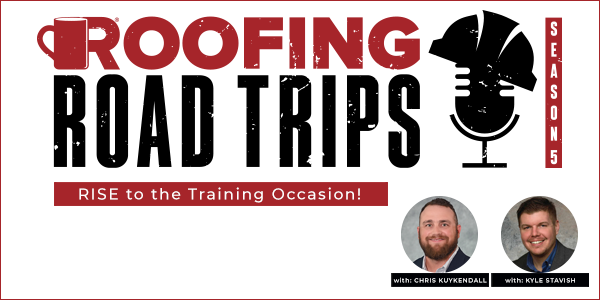
Kyle Stavish and Chris Kuykendall – RISE to the Training Occasion! - PODCAST TRANSCRIPT
Read More ...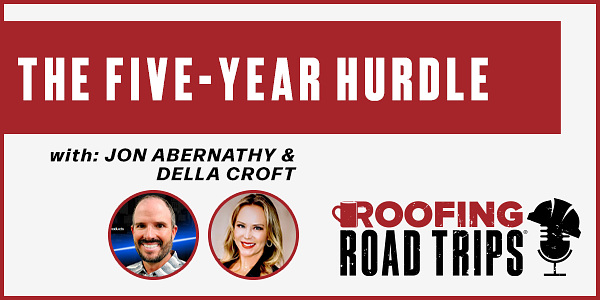
Jon Abernathy and Della Croft - The Five-Year Hurdle - PODCAST TRANSCRIPT
Read More ...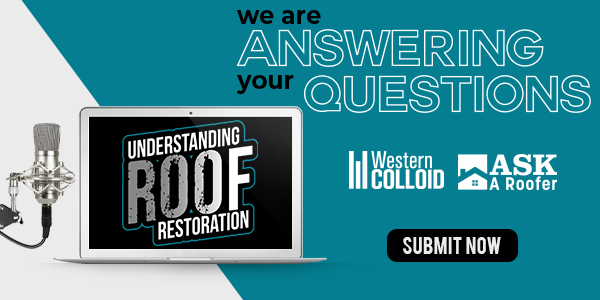
Understanding Roof Restoration Episode 1 - What is The Difference in a Roof Coating And a Roof Coating System? - PODCAST TRANSCRIPTION
Read More ...
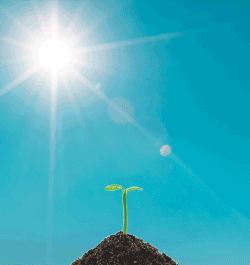

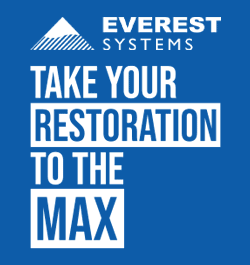




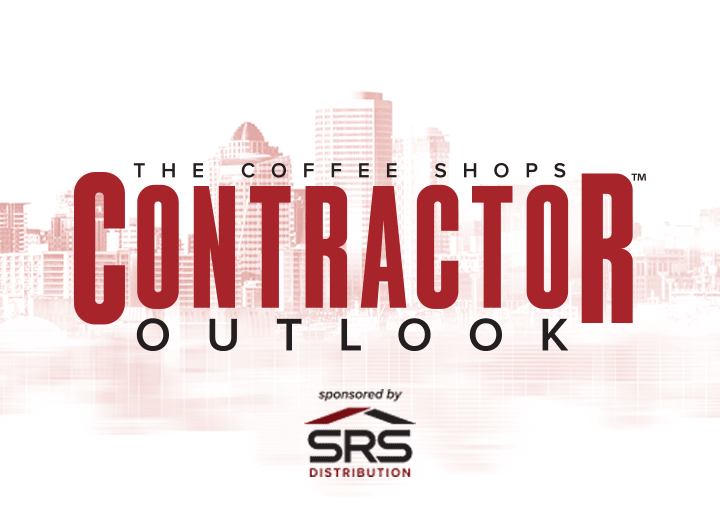
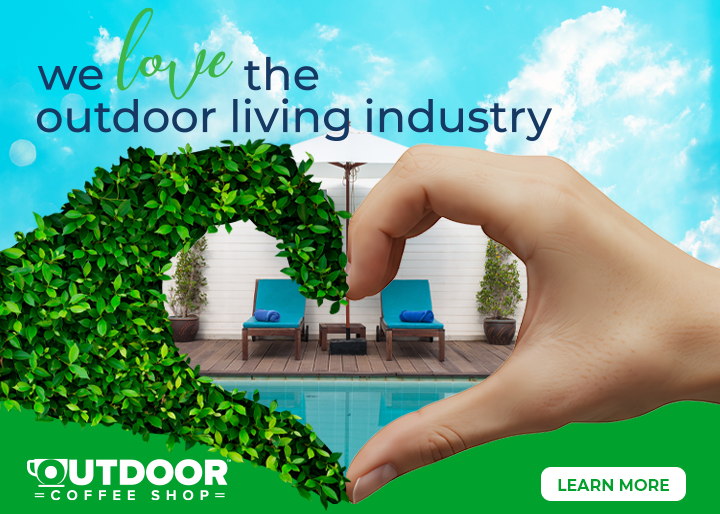
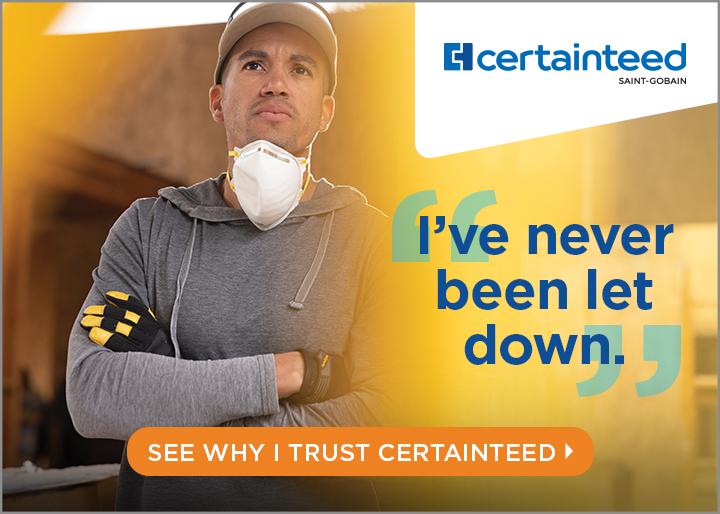
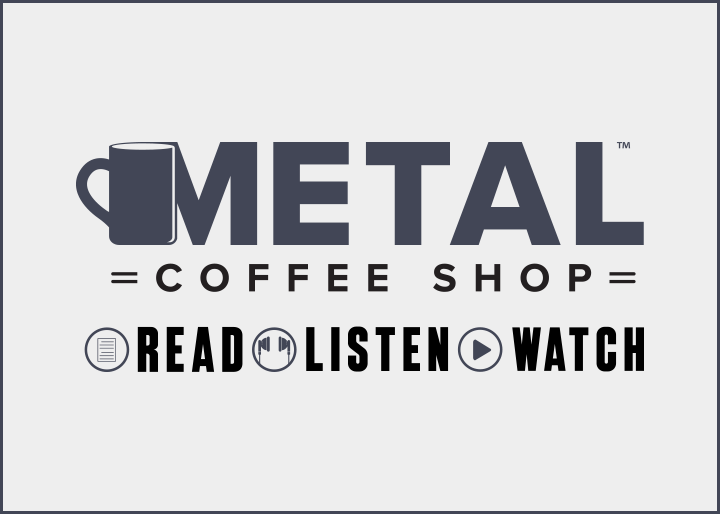

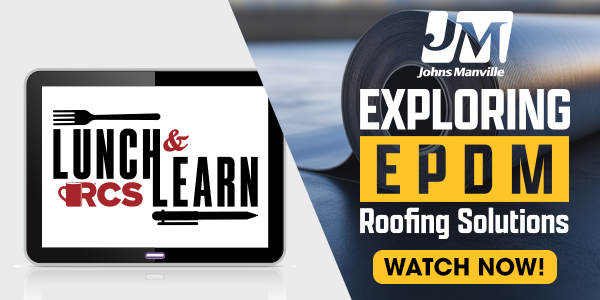

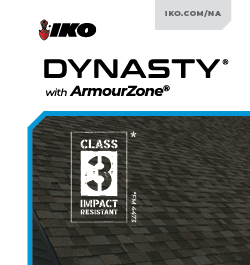



Comments
Leave a Reply
Have an account? Login to leave a comment!
Sign In